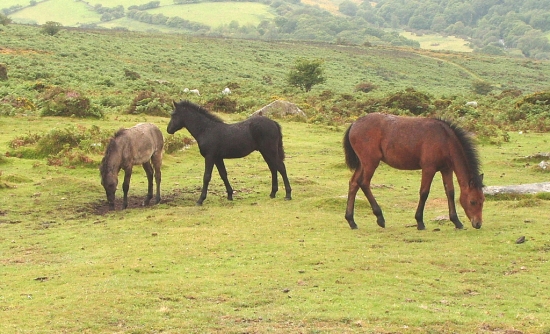In many cities and large towns across the UK, developers have become frustrated by the lack of available space for new projects. Green belt land is increasingly being encroached upon for out of town retail parks, housing developments and industrial estates, yet even this measure has not been enough to satisfy a growing demand for residential and commercial space.

Developers could be allowed to build on Dartmoor
In response to the issue, Environment Secretary Owen Paterson has put forward a proposal which could see developers given permission to build homes, offices and other buildings within protected national parks. He believes that, as well as countering the lack of space in cities, this move would allow rural communities to boost their economies and thus strengthen the overall UK economy.
However, developers would not simply be allowed to run roughshod over large areas of country, as in return they would have to create new nature sites in the surrounding area. Mr Paterson believes that this compromise would be the best scenario for rural areas and construction firms alike, coining the phrase “biodiversity offsetting” to describe the new balance of industry and nature in national parks.
In a speech given to the National Park Authorities Conference, held in Easingwold, York, he said; “For too long we have allowed the lazy assumption that the environment and growth are incompatible objectives within the planning system.
“I believe that, with a bit of innovative thinking, in many cases it is possible to have both. This is why I am particularly interested in Biodiversity Offsetting – offsetting gives us a chance to improve the way our planning system works.
“It could provide real opportunities in our National Parks, where the necessary extension of a farm building could result in the enhancement of an existing habitat or the creation of a new one.”
Should the plans be put into action, England’s 10 National Parks could soon see an influx of developers looking to take advantage of largely unspoiled land. Affected areas could include the Lake District, Exmoor, Dartmoor and the Peak District.
Unsurprisingly, the proposal has already been met with significant opposition by environmental groups. Many have voiced concerns regarding the existing habitats which could be threatened by the arrival of new businesses, while others are worried that construction firms would be unable to replicate the balance required for endangered eco-systems to thrive.
A spokesman for the Campaign to Protect Rural England said; “Exactly how would it be possible for a developer to replace, for example, ancient hedgerows by way of mitigation?
“Some habitats, particularly sensitive ones, are irreplaceable and thoroughly integral to the landscape’s character because it’s taken centuries to evolve – you can’t just order a new one to be delivered somewhere else like it’s an Amazon purchase.
“Offsetting doesn’t address the complex way in which wildlife systems are sustained and thrive, and if it allows developers to push through damaging schemes then it’s just another way for money to win over protecting nature.”
Yet while the environmental impact may be steep, offsetting could potentially allow for tourism sites to be created, thus bringing more funds into National Parks. With the consultation into biodiversity offsetting still open, it is doubtless that the government will be faced with some tough decisions in the coming months.
Do you think the profits which could be generated by biodiversity offsetting for rural areas could ever make up for the environmental impact?